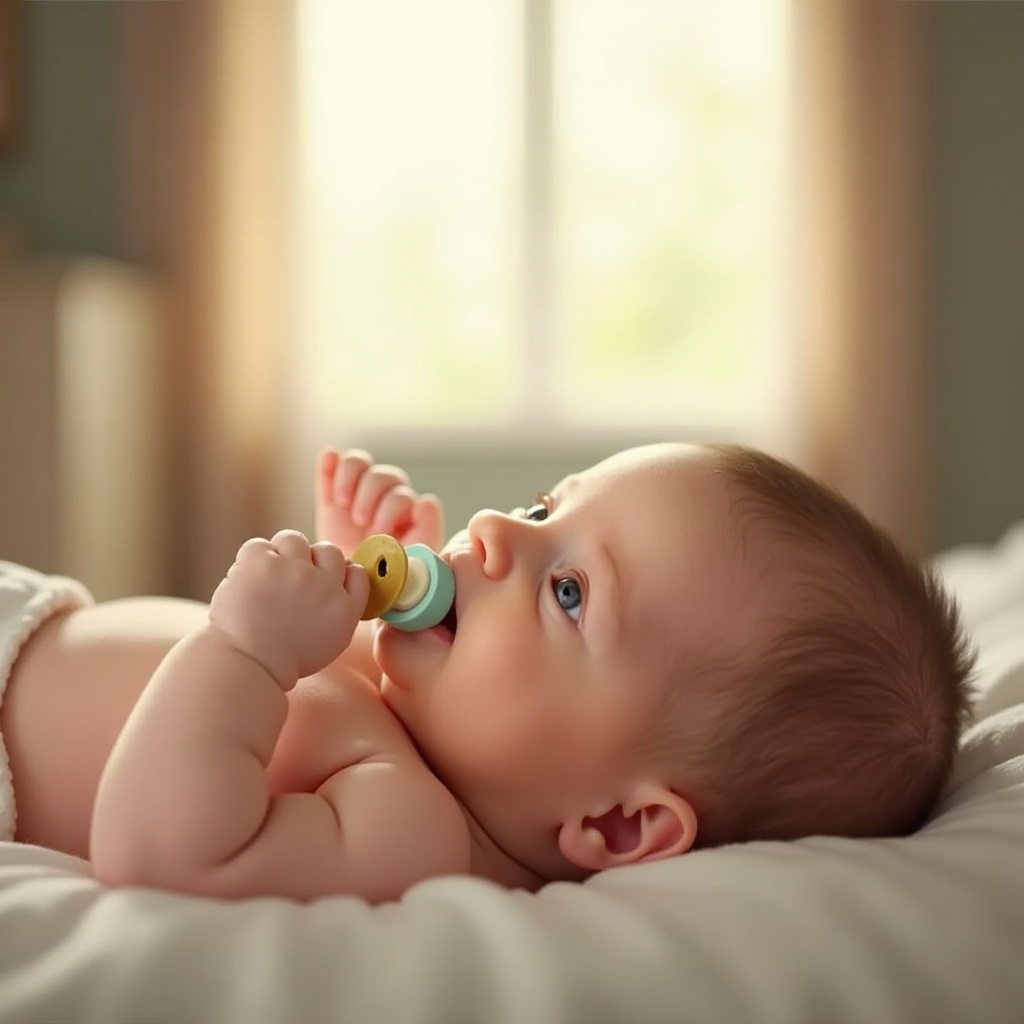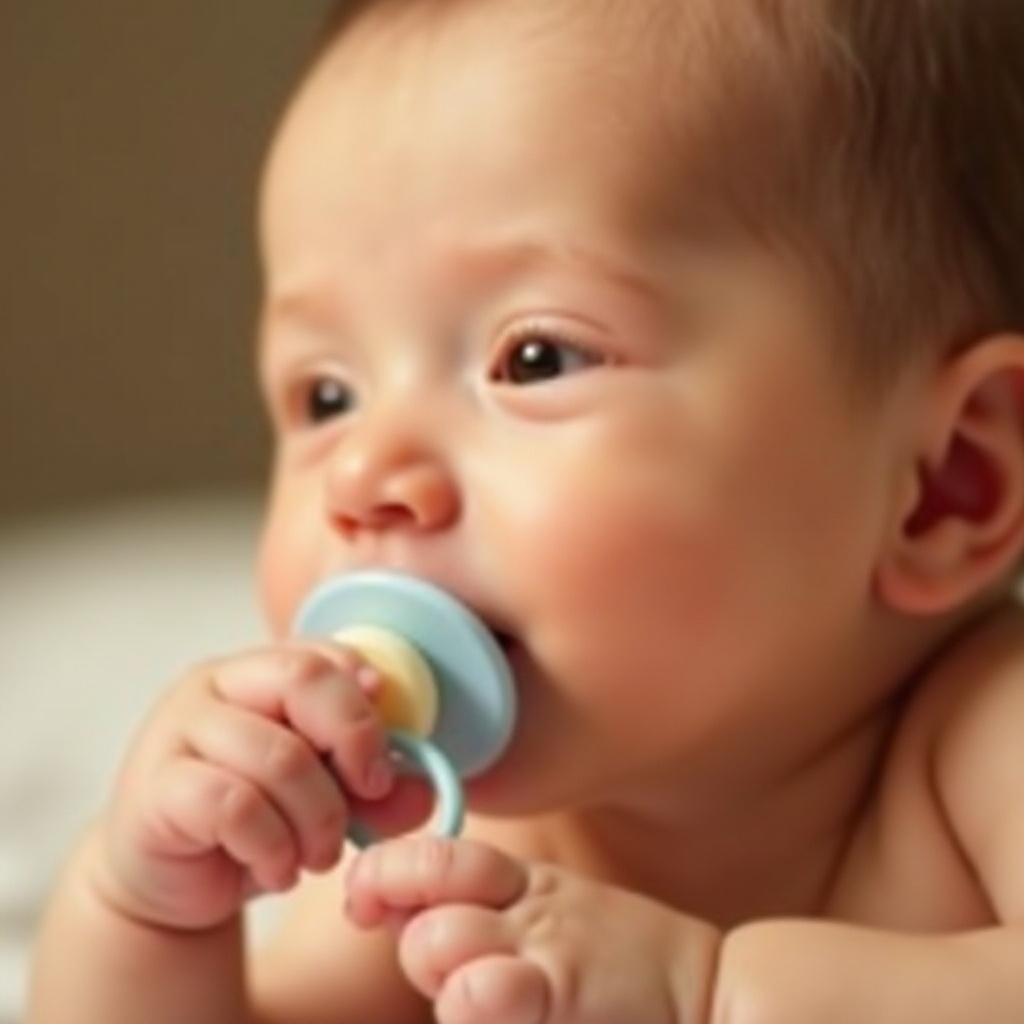Introduction
Navigating the journey of parenthood often includes the puzzle of why your newborn keeps spitting out the pacifier. This common occurrence can lead to frustration and concern, especially when you’re trying to establish soothing routines. By understanding the underlying reasons and exploring practical solutions, you can bring comfort and tranquility to both your baby and yourself.

Common Reasons for Newborns Spitting Out Pacifiers
It’s essential to first grasp why a newborn might spit out a pacifier. Identifying the root causes sets the stage for addressing the issue effectively, ensuring your efforts target the right areas.
-
Anatomical Fit: Size and Shape Challenges: The fit of the pacifier is crucial for comfort. If it’s too big or a shape that doesn’t align with your baby’s mouth, they might instinctively push it out. Try different designs to see which suits best.
-
Timing and Feeding Habits: Sometimes, your baby may not want a pacifier if they are hungry or not in the mood for comfort sucking. Observation of your baby’s feeding schedule helps determine if the timing is right.
-
Preferences and Temperament: Each baby is unique. What works for one might not for another. Some babies prefer other soothing methods, like thumb sucking or cuddling, over a pacifier.
Understanding these reasons paves the way for choosing the right pacifier tailored to your newborn’s needs and finding methods to encourage its acceptance.

Choosing the Right Pacifier for Your Baby
The selection of a pacifier should be strategic to ensure it serves its purpose without causing discomfort. Here are key considerations:
-
Design and Material Considerations: Pacifiers have diverse designs such as orthodontic, round, or cherry. Materials include silicone and latex. You should observe your baby’s response to find their preference.
-
Age-Appropriate Options: Pacifier sizes are based on age. Newborn pacifiers are specifically designed to fit their small mouths comfortably, while larger sizes should be introduced as they grow.
Appropriately selected pacifiers make the transition to acceptance smoother, assisting in calming your baby effectively.
Techniques to Encourage Pacifier Acceptance
Once you’ve chosen the right pacifier, introducing it to your baby smoothly is essential. Here are some techniques that can help:
-
Introducing the Pacifier Correctly: Present the pacifier gently, allowing your baby to explore it. Avoid forcing it, as this can lead to rejection.
-
Creative Positioning and Usage Tips: Offer the pacifier during calm moments, such as bedtime or quiet times, when your baby is most likely to be receptive.
-
Consistency and Patience: Repeated gentle offering without pressure over time can help your baby get accustomed to it. Be patient; sometimes it takes a few tries.
Using these techniques helps your baby become more comfortable with the pacifier, bridging the gap between rejection and acceptance.

When to Seek Medical Advice
In some instances, persistent rejection of the pacifier may indicate underlying issues. Here’s when to consider professional help:
-
Signs of Underlying Issues: Pay attention to signs like gagging, discomfort, or unusual behavior when your baby attempts to use a pacifier. These could suggest a need for professional evaluation.
-
Consulting a Pediatrician: If concerns persist or you notice any signs of distress, consulting your pediatrician ensures your baby’s health and well-being are prioritized.
Timely intervention helps address any health concerns while maintaining your baby’s comfort and soothing routines.
Conclusion
In conclusion, understanding why your newborn spits out a pacifier is essential for resolving the issue and enhancing their comfort. By identifying the causes, selecting the appropriate pacifier, and applying gentle techniques, you can significantly improve their acceptance and soothe them effectively. Remember that patience and observation are key, and do not hesitate to seek professional advice if necessary.
Frequently Asked Questions
How can I tell if the pacifier is the wrong size for my baby?
If the pacifier seems too big or too small, or your baby struggles to keep it in, it might be the wrong size. Switch to a size recommended for their age and monitor their comfort.
Is it normal for a newborn to reject all types of pacifiers?
Yes, initial rejection of pacifiers is quite common. Trying different shapes, sizes, and materials can help you find one that your baby prefers.
What should I do if my baby chokes on a pacifier?
Ensure your baby is always supervised with a pacifier. If choking occurs, remove the pacifier immediately and consult with a pediatrician to address the issue.
